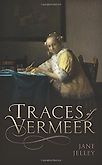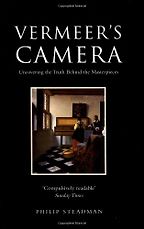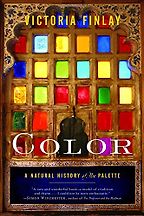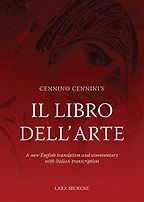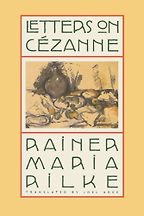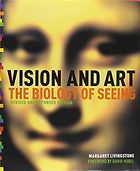Congratulations on your book. Not every art historian gets their hands dirty in quite the same way or quite the same extent. You must be pleased to get this out and onto peoples’ shelves.
The thing is, I’m actually not an art historian, I’m a painter, and words aren’t really my medium. But I wanted to give a take on painting of the past from a practical point of view.
I think that you can look at pictures, and imagine that artists only look at meaning in their work. But actually, making comes before meaning. My book is really all about the way paintings are created, and seeing how the materials and tools of a painter influence the way things turn out. It’s been a bit of a voyage of discovery, as I found myself going in all sorts of unexpected directions, but in writing about Vermeer’s studio methods, I had to look at a number of things all at once, and it’s very much as I think painters work.
There is quite a lot of argument about Vermeer’s working practice, particularly over whether or not he might have used an optical aid, such as a camera obscura. But he only had the same things available to him as did any other painter of his day. Because his pictures look quite different from his contemporaries, the big questions are whether he worked in an unusual way, and also how he could have used a lens in his studio. There is very little documentation about Vermeer, and so I had to start by finding out what were the suggested methods and materials for artists at the time, and how people were using lenses. There was a bit of an overlap between alchemy, medicine and painting then, and old artists’ treatises give recipes for cures and experiments as well as for paint. They were all fascinating, and so my reading became very wide, and it took a very long time to write this book. This is why the bibliography is so big.
And yet you’ve managed to winnow your selection down to five books. Your practical approach comes across very vividly in the pages of Traces of Vermeer. For our discussion you’ve chosen an eclectic mix of books, not all of them necessarily practical handbooks. We’ve got a forensics study that reads a bit like a mystery thriller. We’ve got a technicolor travelogue, a mediaeval manual, a treatise on neurobiology, and a collection of letters. The unifying thread is studio method. What do we mean by that?
When we think about artistic practice, there’s a tendency to look for layers of meaning, as I mentioned; but actually I’m much more interested in layers of paint. In talking about studio method, I looked at process and techniques: how paintings – Vermeer’s and others’ – get made.
Let’s start with Steadman, who opened up this whole debate about Vermeer.
Philip Steadman also took a practical approach in his book Vermeer’s Camera (2001) to determine whether Vermeer used a lens. The reason people think it possible, or even likely, is because Vermeer’s work has qualities that stand out, qualities which are unusual, and which could be related to the use of optics. In particular we see an extraordinary sensitivity to light, and a sense that we are looking at moments frozen in time. There are other unusual features too. There are few lines, mostly just blurry edges; there are changes in focus; and shifts in scale. There are also little highlight dots in his pictures, which are unusual; and in the lowest layer there’s a lack of compositional line, unlike in the underpaintings of other Old Master painters of his day. Vermeer’s painting is composed of shapes, rather than lines.
Get the weekly Five Books newsletter
Rather than arguing in the abstract, Steadman asked himself whether science might provide the answer. He is an architect, and he took an empirical approach. What he did was to assume that Vermeer’s pictures, the spaces he shows, were actually real; and using the scale of some furniture, maps and tiles that still exist, he reconstructed a virtual studio, using mathematical calculations and architectural drawing. He worked out where Vermeer must have been sitting to paint the scene, and positioned a hypothetical lens in this place. Then he calculated the size of the projection from the lens at this viewpoint. In a significant number of cases, the scale of Vermeer’s paintings exactly matched the real objects in the projections on the wall. He thought that this couldn’t be down to chance, and was proof that Vermeer had used some kind of lens or instrument like a camera obscura.
All this raises a different problem, however, and this is where my work began: the projection on the back wall is upside down, as well as back to front. If you were to make a tracing of that directly and rotate it upright, it’s still the wrong way around, like a mirror image. That’s not much use to a painter really, because it is impossible to then compare it with what you are actually seeing in the studio.
“In a significant number of cases, the scale of Vermeer’s paintings exactly matched the real objects in the projections on the wall.”
The other problem with a camera obscura is that it’s a dark enclosure and so it’s very difficult to use colour. You can really only trace with something that is dark itself. I came out of a lecture by Steadman and thought … I think I know what he could have done! I wrote to Steadman the very next day. If you’re a painter, you’re really used to experimenting and messing about in the studio.
I realized that the orientation of the image in a camera obscura is a printing reversal of the original motif in the studio. So, if you made a tracing in paint from a projection, on something non-absorbent, then you could print it onto a canvas, and it would be all the right way around. The very exciting thing for me that when I tried this for myself, I found that these prints looked incredibly like Vermeer’s own under-paintings. They didn’t have any compositional line in them either. That’s because you have to trace one shape in relation to another, and because everything spreads out a bit when you press the tracing on to the canvas. Vermeer depended on his underpaintings a great deal. They established the plan of his pictures, and contributed towards the effect of strong illumination.
Steadman’s book suggests that Vermeer saw what he painted. Of course, just that by itself is a huge area of discussion, because a lot of art historians do not think that Vermeer sat and painted exactly what he saw. They think that his paintings are actually constructions: that he would have never have seen chequered floor tiles in his studio, that he would never have seen expensive musical instruments, that he would certainly never have owned anything as expensive as the chandelier we see in his paintings. So did the scenes we see in his pictures really exist? Steadman thought that they did, and that was his assertion: he thought Vermeer painted the scene in front of him. I think that the answer lies somewhere in the middle of all the arguments.
The documentary evidence that Vermeer left behind is really thin. The paintings are practically the only eloquent testimony to his methods and the work that he did in his day.
It’s very frustrating. Vermeer has become such an icon that we are desperate to know how he painted. The pictures somehow speak to people in a way other painters’ pictures don’t. It’s partly because of the extraordinary qualities about them that people take Vermeer so personally. They feel very strongly about him, because they have such an emotional connection to his painting.
One way that artists create emotional connection, of course, is through use of colour. No matter what optical instruments Vermeer might have used for his compositions of course you know no camera could have mixed his intense and subtle colours for him. Let’s talk about the second book on your list, which discusses amongst other matters ‘the things that made art’, as Victoria Finlay puts it.
If you’re going to do any kind of experimentation about a 17th-century painter, you’ve really got to know something about the materials they’re working with. One of the many books I looked at was Victoria Finlay’s. She not only documented what colours Vermeer used, she went to find them in the real world. So her book is a travelogue. She’s rushing around the world trying to find the source of particular pigments.
As a painter, and as a studio practitioner, what’s your favourite colour and why?
That’s a really difficult question. I suppose I would have to side with Vermeer and go for blue. Artists were working in layers in Vermeer’s time and did not put all the colours they were going to paint with all on their palette at once, as people do now, and mix them all up. You used them at particular stages of the work. Pigments were sometimes incompatible, some were expensive, and you wouldn’t really want to put an expensive colour underneath a cheap one, because it would be a complete waste. Among the most expensive then and now is ultramarine. The Music Lesson, the very famous painting that belongs to our Queen, has ultramarine blue mixed in with the brown of the ceiling of the scene portrayed; it’s got this blue in the white of the wall; in the window glass; it’s got blue all over. I reckon the reason that Vermeer put it everywhere was that he really couldn’t bear to waste it. It couldn’t be stored, and so he would have to use it up, or it would just dry on his palette.
“It is quite extraordinary that the finest blue stone still comes from the same mine now as it did in Vermeer’s time. It’s also still as highly priced.”
Finlay documented a visit to the lapis lazuli mines in present day Afghanistan, the source of ultramarine for hundreds of years, and variously controlled by the Taliban and others. She was fearless to seek it out after several attempts, and she described a river running over blue stones underneath – her descriptions are very vivid. Finlay saw the method of extracting lapis lazuli for herself. It is quite extraordinary that the finest blue stone still comes from the same mine now as it did in Vermeer’s time. It’s also still as highly priced. Its value is just about the same as gold, even now.
There are two other colours I’d like to mention, which Finlay researches in her book. One is Indian yellow, which has always been a bit of a mystery, and which she proves does not exist. It was described as having been made from the urine of cows that fed on mango leaves. This pigment appears in a lot of literature on painting, and was supposed to feature in one of Vermeer’s pictures, but she discovered that Indian yellow was unlikely to have been anything to do with mango leaves, although urine may have been one of the ingredients.
The other is cochineal, which is a very important colour, made from dried insects from South America, and which makes a strong deep red. In Vermeer’s day, this raw material was a hot new thing, and also very valuable, though few people knew what it was. We still use it in pink icing on cakes and in red lipstick. If you go into an art store and see a shade of red called carmine lake, that’s it. But be aware that the word ‘lake’ means it’s a dye that’s been made into a pigment, by attaching it to something insoluble. In Vermeer’s day, red and yellow lakes were used as glazes over other colours, but they tended to fade. So today Vermeer’s pictures don’t quite look as they did when they left his easel.
Finlay was a great inspiration to me. If she can do something so practical I thought I could too. And so I went off and made some lake colours of my own in the kitchen. I researched paint storage, and because paint tubes hadn’t been invented in Vermeer’s day, I filled pigs’ bladders with paint to see how well they worked. I also made ultramarine from lapis lazuli, which came from the very place where Finlay had travelled to in Afghanistan. This was not over-successful I might say, because a huge amount of effort produced a very small amount of pigment – but this also tells you something about why it costs such a lot of money. It’s probably just as difficult to make it now as it was then.
It’s Cennino Cennini who, if you want to do a nice little segue, has the ultramarine recipe.
If Steadman’s book had me looking through the lens at what Vermeer was seeing, Cennini had me inhaling some of these arcane vapours of pigments and solvents and preparations. I felt like I was in an alchemist’s laboratory reading some of the passages in this book.
Cennini wrote his ‘Book of the Art’ around 1390 or so. It seems that he really had tried things out himself. I chose a new translation by Lara Broecke, who has been very careful in her work. There was no single, original manuscript of Cennino Cennini’s work, only a number of copies. What Broecke did was to look at them all, and work out the best translation of elements from each, and to be quite precise about these recipes.
“I used Cennino’s recipe exactly, using authentic materials, which included lye, which I had made myself. To my astonishment, it actually worked.”
It’s quite exciting actually for a lot of painters to suddenly have a new translation. The previous edition was from 1954, The Craftsman’s Handbook by Daniel Thompson; and for a long time I used one from 1899 by Christiana Herringham. Both good, but Broecke is a conservator herself, and this really comes through. In my first efforts at extracting ultramarine out of lapis lazuli, I used Cennino’s recipe exactly, using authentic materials, which included lye, which I had made myself. To my astonishment, it actually worked.
There are so many other useful lessons, that are historically significant in Cennino’s book. If you want to know how to put gesso down on a board; how to grind paint; Cennino will tell you. He takes you by the hand and shows you how.
As we’ve seen, you can accomplish optical effects through the use of instruments and through the use of colour. This raises questions about how we perceive the world. How are artists able to use optical sleight-of-hand; whether it’s the use of colours, or the use of perspective, to create trompe l’oeil effects? How is this possible? Margaret Livingstone’s book, Vision and Art, has a few answers.
There are many things as an artist you can’t discover or explain by yourself along the way, like how a bright colour can appear to be lighter than it is, or the science behind making your picture look as if something is receding. Margaret Livingstone explains tricks of the eye: questions of luminance, depth and colour; and does so in terms of our vision system. All the time painters have a challenge of expressing something that is three dimensional, on the surface of their canvas, which is flat.
That is one of the big clues about Vermeer’s technique related to the possible use of a lens. His images do seem particularly flat. Some of his paintings feature little shapes that almost touch, which make no sense really; but if you had both eyes open, and could be in Vermeer’s studio, and could see what he saw, then you’d see the depth. But his paintings appear to be made by looking with only one eye. The abstraction of shapes eventually leads your mind to understand that there’s space between some things- one example is the Woman with a Lute, and the map in the background. Her head and fingerboard almost touch the map holder, yet must be some distance away.
The colour part of Livingstone’s book is quite fascinating, particularly where she is talking about how tones can appear the same in a black and white photograph, but how very differently they read in a colour version of the same image. This is a lesson taken particularly to heart by the Impressionists, who were much more interested in colour relationships than differences in dark and light. Their pictures are very difficult to read in black and white but make complete sense in colour.
“Vermeer would not have thought of painting in neuroscientific terms; but he intuitively understood these things himself.”
However, Vermeer’s pictures work very well in black and white, because of the strong tonal plans that he put down at the very beginning of his picture. We can see that he followed this up with a lot of quite dull colours. He placed his bright paint sparingly, and with great forethought, at a later stage. His paintings are not just images of moments seen. They are very well planned and structured.
Livingstone explains that you can understand some images in monochrome really well. She tells us that colour is actually processed in a completely different part of your brain. This was very interesting to me, because my experiments indicate that a dark print from an image projected by a camera obscura lens could be used as an under-painting on a light canvas, and then colour could be ‘mapped’ as a separate step, out in the studio.
Also, Livingstone shows how a shape that may read as black in one visual context is actually lighter than something we might read as a shade of white in another part of a picture. That happens in Vermeer too: a black tile that’s quite far back in the picture plane is actually lighter than a white tile that’s closer to us, which is extraordinary really. She writes about the way that black-and-white checkerboard patterns can create an illusion of depth on a flat surface, and explains ways in which artists ‘trick themselves’ into seeing the world as flat, in order to make it easier to put information on their drawing or painting surface. Vermeer would not have thought of painting in neuroscientific terms; but he intuitively understood these things himself.
“You couldn’t just squeeze paint out of a tube, you had to go and grind it yourself first.”
In fact, it is quite possible he used a number of different techniques in his paintings. Not just using a lens, but strings and perspective drawing tools, preparatory sketches, and painting by eye. He had to wait for every layer of his painting to dry before adding the next. Each had its purpose, and its particular set of pigments. Painters of the time only occasionally mixed colours- mostly, they used paint in its pure state, one colour on top of the other. So in order to get a green, you’re not actually mixing yellow with blue, you’re putting blue down, then putting yellow on top of it, and that’s a very different way of painting than we find now.
Looking at studio methods of Vermeer’s time certainly made me think about how difficult it was to paint then: what hard work it was, how slow it was, and how much preparation was needed. You couldn’t just squeeze paint out of a tube, you had to go and grind it yourself first. You wouldn’t want to waste anything and you’d have to really organize things.
Painters today have this extraordinary array of materials that Vermeer just didn’t have. What it makes you think is, ‘well how would his paintings look if he was working now?’ Would his pictures be as beautiful? I wonder whether they would, because I think sometimes, less is more for a painter. You know if you have to make do with only limited materials, then probably you’ll push them as far as you can; and I think that’s what Vermeer did.
The real debate for many has been whether using a camera obscura somehow diminishes Vermeer’s position as a great master of painting. This is the question that has upset so many art historians. But using a lens in the way I suggest does not get in the way of his brilliance: it just becomes one of the many tools at his disposal. And he, like many other painters before and since, probably experimented with what was available to him, and used whatever he could, to best effect.
We’ve talked a lot about technique. You chose as your final selection, Letters on Cézanne by Rilke, which feels more poetic than technical.
I found Rilke inspirational, because he talks about painting in a really extraordinary way. Cézanne himself said that ‘talking about art is almost useless’. Art is a visual thing, and writing is not: the two are very different. And yet, Rilke somehow is able to express in words the way Cézanne’s paintings made him understand the world.
Rilke writes as if his eyes have just opened, as if he has only just seen Cézanne’s work; and it renews his vision, and he suddenly sees everything differently. He takes a walk in Paris, and recognizes Cezanne’s colours in the streets. There are a very few people who can write about painting well. Take the example of colours. Dust, dandelion, butter, hay, lemon, mustard. All these words conjure up different kinds of yellow. If you say to a child ‘paint yellow’, they’ll probably just take the yellow they got in front of them and use that. But if you say, ‘paint the colour of the inside of a banana’, they are likely to choose a different shade of yellow, or think about what they see in their head. Rilke has managed to pin down the colours he sees in Cézanne’s work, and to express and explain them really precisely, and for that, I’m very grateful to him. In fact, if you go down to the South of France you recognize Cézanne’s landscapes as he depicts it in his paintings, and also see it in Rilke’s descriptions.
“Rilke writes as if his eyes have just opened, as if he has only just seen Cézanne’s work; and it renews his vision, and he suddenly sees everything differently. ”
But Cézanne wasn’t working with tone anything like as much as Vermeer. He was working with colour instead, and used it to express form, and to express depth; and that is what Rilke responded to. If you’re a painter, I believe you have to think in those terms. That’s why Rilke is a great writer on art: somehow, he is able to write in those terms and his words make you feel the way you do when you look at great painting. You might not quite remember the colours, or the composition, but when you read Rilke you remember how it felt to see a masterpiece.
In the end, no matter how you analyze painting, you can only go so far. You can try to find out about the studio method of a great master like Vermeer, but there is something that will always be out of reach. We can see what pigments he used, what order in which he put the paint on, even make guesses about how he could have used a camera obscura; but we will never know what made him make the choices he did. As Georges Braque said in the twentieth century ‘you can explain everything about a painting, except the bit which matters’. Maybe that is the definition of genius.
Interview by Romas Viesulas
November 27, 2017. Updated: January 12, 2020
Five Books aims to keep its book recommendations and interviews up to date. If you are the interviewee and would like to update your choice of books (or even just what you say about them) please email us at [email protected]
Five Books interviews are expensive to produce. If you've enjoyed this interview, please support us by donating a small amount.

